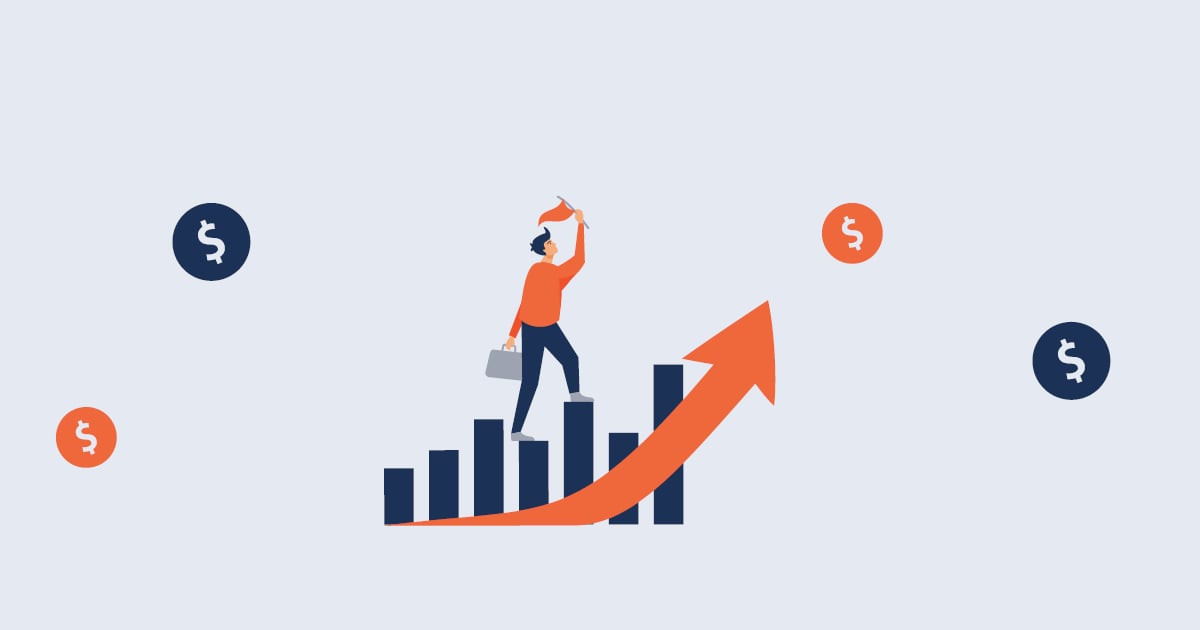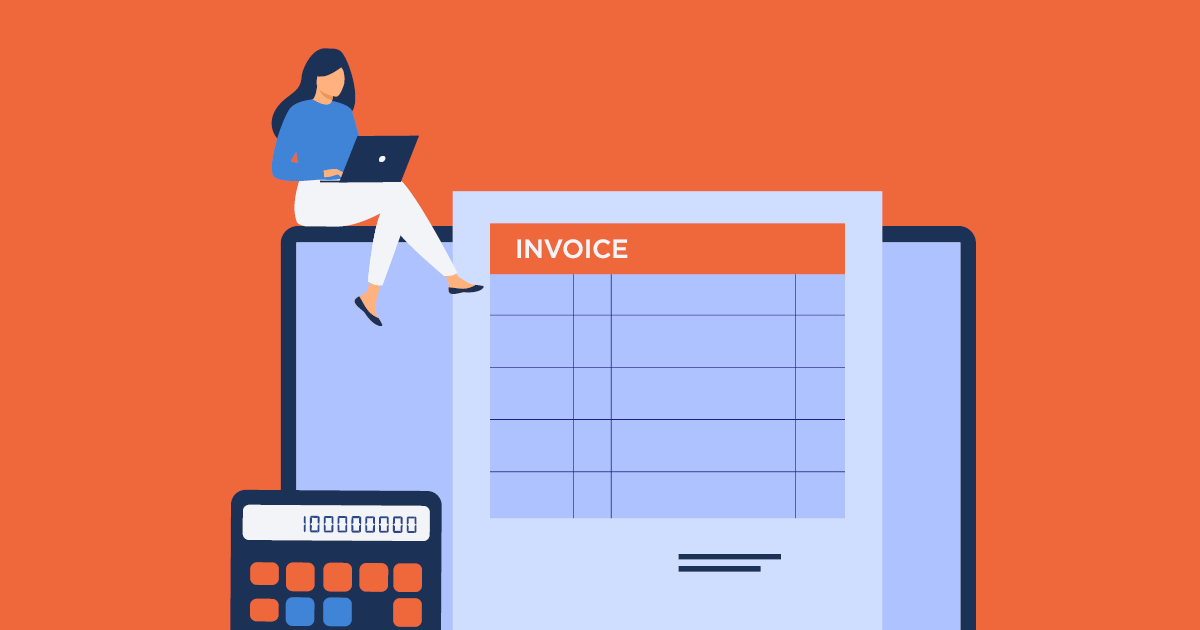It's no secret that cash flow is the lifeblood of any business. Without a steady stream of cash coming in, it can be difficult to keep the lights on, pay employees, and cover other overhead costs.
That's why it's important to have a strong receivables management process in place. In this blog post, we will discuss some tips and best practices for improving your receivables management process.
So, is your cash flow vulnerable?
Let's find out!
Analysing your accounts receivables
The first step in understanding if your cash flow, and therefore your business, is vulnerable, is to look at the data produced by your accounts receivables. This data can tell you a lot about the health of your receivables process.
There are a few key indicators that you can look for when analysing your accounts receivables data. These indicators can help you to identify potential disruptions to your cash inflows, and therefore help you to avoid them.
- An over-reliance on a single source of sales - By looking at metrics like the percentage of sales generated by customers, products, services, and divisions, you can get a good idea of how diversified your sales are. The greater your diversification, the less vulnerable your cash flow will be to disruptions.
- A low accounts receivable turnover ratio - This ratio measures how quickly your customers are paying their invoices. The higher the ratio, the better, as it indicates that your customers are paying their invoices in a timely manner. A low accounts receivable days outstanding ratio, on the other hand, is a red flag that your customers are taking too long to pay their invoices.
- Decreased customer purchase levels - If you notice that your customers are buying less from you, it's a sign that they may be experiencing financial difficulties of their own. This could eventually lead to them paying their invoices late, or not at all. I could also mean you are not doing enough to engage and nurture your customer relationships, which is essential to keeping them happy and loyal.
- Changes in payment patterns - If you notice that your customers are starting to pay their invoices later than they used to, it's a sign that they may be experiencing financial difficulties. This could eventually lead to them paying their invoices late, or not at all. Open communication is normally the solution here, so talk to your customers and see if there is anything you can do to help them.
- Long payment timelines - If your DSO (days sales outstanding) is consistently high, it could be a sign that you need to re-evaluate your payment terms. Long payment timelines put unnecessary strain on your business's cash flow, and can often be easily remedied by adjusting your payment terms or using early payment discounts and late payment fees to encourage timely payments.
- Lack of visibility into accounts receivable - If you don't have a good handle on your accounts receivable, it's going to be difficult to manage your cash flow effectively. Make sure you have a system in place that allows you to track invoices and payments, so you can quickly identify any issues.
- Significant customer churn - Customer churn can have a major impact on your accounts receivable. If you're losing a lot of customers, it's likely that you're also seeing an increase in unpaid invoices. Review your customer retention strategies and see if there are any changes you can make to reduce churn.
- Unpredictable sales - If your sales are unpredictable, it's going to be difficult to manage your accounts receivable. Try to even out your sales by implementing a minimum monthly sales target. This will give you a better idea of how much money you need to bring in each month and will help you avoid any cash flow issues.
- Low customer acquisition - If it's taking you a long time to acquire new customers, it's going to have a negative impact on your accounts receivable. Review your customer acquisition process and see if there are any changes you can make to speed up the process.
- Inadequate accounting staff - If you don't have enough staff to handle your accounts receivable, it's going to fall behind. Make sure you have adequate staffing levels to handle your accounts receivable and other accounting tasks. If hiring in-house isn't an option, you can always outsource your accounts receivable to an expert third-party provider.
While every company is going to have its own set of key metrics for health cash flow, tracking the above data points on a regular basis will give you a good idea of how well your accounts receivable process is working and where there might be room for improvement.
By keeping tabs on your accounts receivable, you can quickly identify any potential problems and take steps to correct them before they have a major impact on your business. With a little effort, you can keep your accounts receivable under control and reduce the risk of cash flow problems down the road.
How to stabilise and improve your cash flow
Now that we've looked at some of the common causes of cash flow problems, let's turn our attention to ways you can stabilise and improve your business's cash flow.
There are a number of things you can do to improve your accounts receivable process and reduce the risk of cash flow problems:
Review your credit policy
Make sure your credit policy is realistic and achievable, and that you are consistently applying it to all customers. If you don't already have a solid credit policy in place, now is the time to develop one.
To help out, we've created a credit control template you can use to develop your own credit policy. While every businesses is going to have a slightly different approach to credit control, there are some key elements that all good policies should include:
- A clear definition of who your target customers are - this will help you to avoid extending credit to customers who are high-risk
- Credit limits for each customer - this will help you to control your exposure to bad debt
- Clear payment terms and conditions - this will set expectations with your customers and help them to understand your payment process
- Criteria for extending credit - this will help you to make sure that you are only extending credit to customers who meet your criteria
- A process for monitoring and reviewing accounts receivables - this will help you to identify any issues early and take action to resolve them
- Penalties for late payments - this will help to encourage customers to pay on time to avoid late payment fees
- Incentives for early payments - this will help to encourage customers to pay as soon as possible
- Procedures for collections - this will help your staff to know what to do if a customer does not pay their invoice on time
By having a well-defined and consistently applied credit policy, you can minimize the risk of bad debt and late payments, and maximize your chances of getting paid on time
Monitor your customers' payment behaviours
Big data is a key resource that can help businesses to more accurately assess their customers' risk profiles and make informed decisions about credit extension.
Too often, businesses credit check customers only when they first start doing business with them.
However, customers' circumstances and payment behaviours can change over time, so it is important to regularly check their creditworthiness. This can be done manually or through the use of automated tools that track changes in customer credit scores.
By monitoring your customers' payment behaviours, you can more quickly identify those who are at risk of defaulting on their payments. This allows you to take proactive measures to protect your business' cash flow.
Opening lines of communication when customers fall behind on their payments is also important. This shows that you are willing to work with them to find a solution, and can help to prevent the situation from escalating.
Offer discounts for early payment
One way to encourage customers to pay their invoices promptly is to offer them a discount for early payment. This can be a per cent of the total invoice amount or a fixed dollar amount. Just make sure you build the cost of the discount into your pricing so that you're not losing money on the deal.
There are a range of different ways to offer a discount for early payment, so find the one that works best for your business and your customer base. Some examples include:
- Offering a discount if the invoice is paid within seven days
- Offering a tiered discount, with a bigger discount for payments made within three days compared to payments made within seven days
- Offering a percentage discount for all invoices paid early
Whatever discount you offer, make sure it's clearly stated on the invoice. This will help to ensure that your customers are aware of the discount and know how to take advantage of it.
Put your customers in categories
A one-size-fits-all approach to credit control is normally the least effective. By segmenting your customers into categories, you can tailor your approach to each customer type. This will help you to be more efficient with your time and resources, as well as improve payment rates.
Categorising customers can be done in a number of ways, but some common methods include:
- By industry sector
- By company size
- By payment history
- By credit score
Once you have your customers categorised, you can put together a plan for each customer type. This will help you to focus your efforts on the accounts that are most likely to result in payment, and also allow you to offer different terms to different types of customers.
Consider offering discounts for early payment, or setting up a tiered pricing structure based on credit score. You can also offer different payment methods to different types of customers; for example, offering net 30 terms to business customers but requiring consumers to pay upfront.
Manage your customer relationships
Good customer relationships are essential for accounts receivable management. If you have a good relationship with your customers, they are more likely to work with you to find a solution that works for both of you if there is an issue with payment.
Make sure to stay in touch with your customers, and keep them updated on their account status. Send friendly reminders before payments are due, and follow up after payments are missed. If you manage your customer relationships well, you will be more likely to get paid on time.
You can also use CRM software to help you manage your customer relationships. CRM software can automate many of the tasks associated with accounts receivable management, including sending reminders and follow-ups.
Make sure to stay in touch with your customers, and keep them updated on their account status. Send friendly reminders before payments are due, and follow up after payments are missed.
Use accounts receivable management best practices
There are certain best practices you should follow when managing accounts receivable. These include:
- Maintaining accurate records
- Communicating with customers regularly
- Establishing clear payment terms
- Offering discounts for early payments
- Following up on late payments promptly
By following these best practices, you can improve your accounts receivable management and reduce the risk of cash flow problems.
If you're having trouble managing accounts receivable, consider outsourcing the task to a professional accounts receivable management company. These companies specialise in Accounts Receivables Management (ARM) and can provide expert assistance with collections, invoicing, and other accounts receivable tasks.
Outsourcing accounts receivable can be a great way to improve your cash flow and reduce the risk of financial problems. If you're considering outsourcing, be sure to research different ARM companies to find one that's right for your business.
Use technology to your advantage
There are many software solutions available that can help you with accounts receivable management. Look for a solution that fits your business needs, and make sure to implement it properly.
Automation has become increasingly important in accounts receivable management. Many businesses are using accounts receivable automation (ARA) to streamline their invoicing and collections processes. ARA can save you time and money, and it can help you avoid late payments and other financial problems.
Credit control automation is another tool that can be used to improve accounts receivable management. This type of software helps businesses automate the credit control process, including issuing invoices, sending reminder notices, and following up with customers.
Chaser's award-winning credit control management platform is the perfect solution for businesses of all sizes. Our software is designed to save you time and money, and it can help you improve your accounts receivable management process. Contact us today to learn more about our software and how it can benefit your business.
With Chaser, you can:
- Send automated reminders through email and SMS - so you don't have to waste time chasing customers yourself
- Get paid faster with online payments - customers can pay you with just a few clicks
- Credit check your customers - know who you're doing business with and avoid bad debt
- Compile reports based on payment data - so you can keep track of your accounts receivable and make informed decisions about your business
- Offer multiple payment options using our payment portals - so customers can choose the payment method that suits them best
- Easily escalate bad debt to our professional collections team - if you need help recouping payment accounts receivable, our team can take over and get you paid
Chaser is the perfect solution for businesses of all sizes. Our software is designed to save you time and money, and it can help you improve your accounts receivable management process. Contact us today to learn more about our software and how it can benefit your business.
Secure your cash flow with Chaser
Accounts receivable management is an important part of running a business. By following the tips and processes above, you can improve your accounts receivable management and make sure that your business's cash flow is less vulnerable.
Chaser offers our customers a unique solution that helps them get paid faster and manage their accounts receivable more effectively. By leveraging the power of automation, Chaser can help you take control of your cash flow and keep your business running smoothly.
If you're looking for a way to improve your accounts receivable management, contact us today to learn more about our software. We'll be happy to answer any questions you have and show you how our software can benefit your business.
You can even take advantage of our 14-day free trial to see how Chaser can help you get paid faster. So why wait? Sign up today and take control of your cash flow!




